Once upon a time… So begins any epic tale of adventure and mystery, and for fans of both Disney and Universal’s parks, today’s tome may be one of the greatest theme park fables ever… The story of a single cancelled concept and the chain reaction it set off across Disney Imagineering and Universal Creative.
For years, we’ve been adding stories to our collection of Lost Legends – the full, definitive write-ups on rides, attractions, and experiences that changed the theme park landscape, and then disappeared. We hit the road to explore the beginnings of the original TEST TRACK, witnessed the interdimensional origin of The Twilight Zone Tower of Terror, pulsed through the bloodstream aboard Body Wars, and literally dozens more.
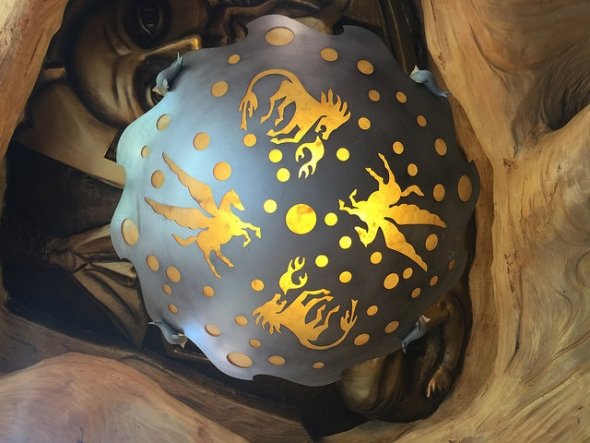
But today’s entry is a mythological double-feature: the almost-believable story of how the epic plans for one of Disney World’s most famous never-built projects, Beastly Kingdom, might’ve inspired or even shaped the short-lived land of legends, The Lost Continent, brought to life just a few miles up the road at their biggest competitor. It’s a swirling, time-traveling tale of the potentially-intertwined creation of two of the leading theme parks on Earth, and the could-be classic that turned into a Lost Legend between them.
Could it possibly be that Disney accidentally designed, then indirectly lead to the destruction of Universal’s most incredible themed land? We’ll let you be the judge… But to tell the story of Disney’s never-built land of dragons and unicorns and how the concept may have been temporarily revived at Universal Orlando, we have a lot of ground to cover.
And before we head off, remember that you can unlock rare concept art and audio streams in this story, access over 100 Extra Features, and recieve an annual Membership card and postcard art set in the mail by supporting this clickbait-free, in-depth, ad-free theme park storytelling site for as little as $2 / month! Become a Park Lore Member to join the story! Until then, let’s start at the beginning…
Hollywood Wars
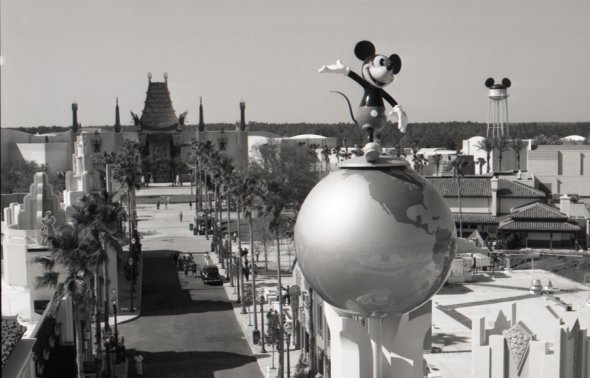
As unlikely as it may sound, the interwoven stories of two theme park lands based on dragons, unicorns, and sorcery begin with the 1989 opening of the Disney-MGM Studios Theme Park – the third gate at Walt Disney World in less than two decades. The miniscule movie park wasn’t just a pet project of cinematic CEO Michael Eisner; it was a preemptive strike against a would-be competitor.
Since the 1960s, Universal Studios in Hollywood, California had been offering a world famous Studio Tour, whisking tram-fulls of guests through their authentic backlot of fabled movie sets, real production facilities, special effects demonstrations, and staged encounters with Jaws, King Kong, an earthquake, and more. And throughout the 1980s, MCA – then-onwers of Universal – had gotten serious about the idea of building a second studio (and accompanying Studio Tour) in Orlando.
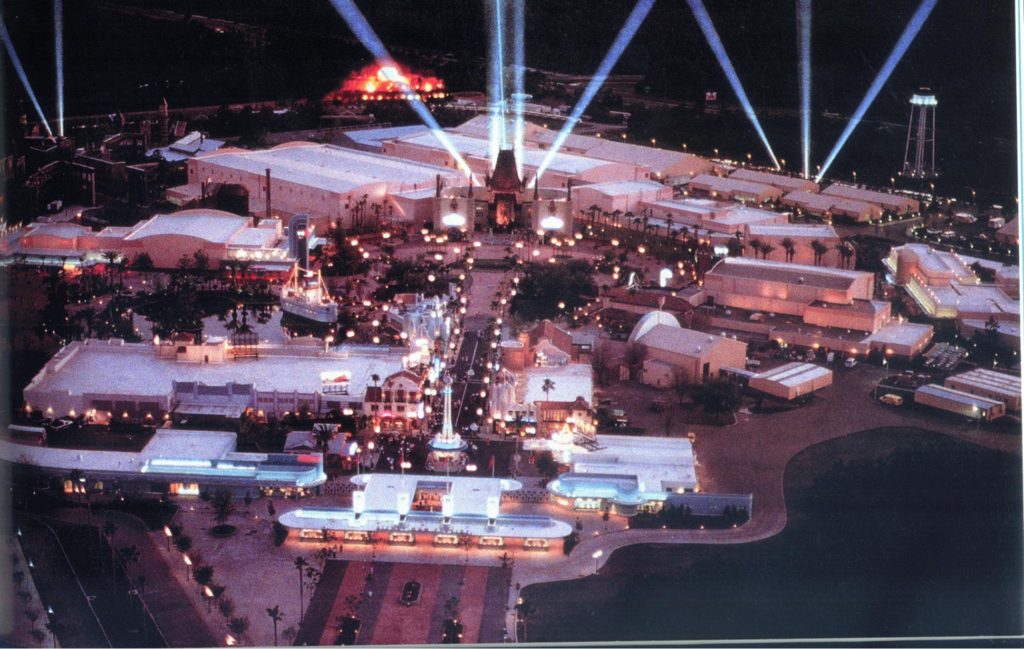
Though Disney’s fast-tracked studio park opened first, Universal’s followed just over a year later. And as a matter of fact, these two “studio” parks inadvertantly kicked off a generation of copycats, stirring Warner Bros., Paramount, and MGM to either open, purchase, or license parks of their own. The bare aesthetics and cross-promotional potential inherent in a “studio” meant theme parks didn’t need the imagination of Magic Kingdom or the smarts and scale of Epcot; they could be marketing tools! Without meaning to, Disney and Universal had made theme parks an attractive business with low buy-in, and estalished a new model for fellow studios to follow.
Though the DIsney-MGM Studios and Universal Studios Florida were both open for business, both would soon become victims of the flaws inherent in their shared filmmaking foundations…
Studio sours
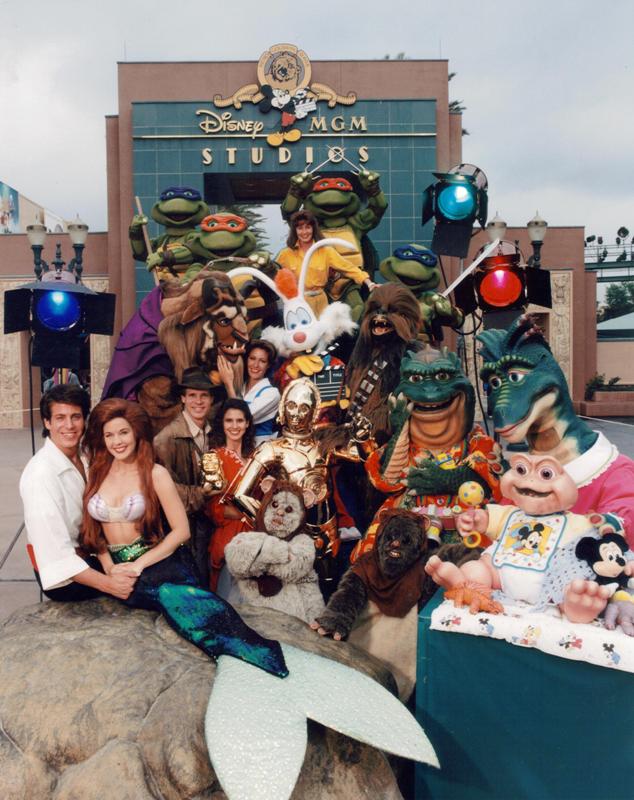
In the Disney-MGM Studios, Michael Eisner finally had a place where his “Ride the Movies” mantra and his long-running push to make Disney Parks cool, hip, and trendy could flourish. Imagine the early-90s thrill of having Ariel, Roger Rabbit, Chewbacca, the Teenage Mutant Ninja Turtles, and ABC’s Dinosaurs all in one place! And better yet, in a “studio,” such contradictions were simply part of the fun!
Just a few miles up the road, Universal’s new Floridian “studio” park opted not for its most current hits, but for generational classics, stocking its backlot lands with standalone “E-Ticket” rides – the Lost Legends: Jaws, Kongfrontation, Back to the Future, E.T. Adventure, and Earthquake.
It didn’t take long for the facade of Disney and Universal’s “studio” parks to begin to crack.
- Both quickly encountered the problem inherent in “studio” parks determined to celebrate films and television: permanent attractions get dedicated to impermanent figures in pop culture, necessitating continuous adaptation;

- Neither ever saw any substantial production in the backlots they’d built, turning their respective “Studio” Tours into tram rides past empty soundstages or faked infrastructure. (Universal’s quickly closed; Disney’s limped along for decades as the Declassified Disaster: Backstage Studio Tour);
- Throughout the 1990s, the emergence of digital special effects, DVDs with their “behind-the-scenes” featurettes, and even the emergence of the Internet dimmed the public’s thirst for pulling back the curtain on movie-making. Consequently, Disney and Universal’s “backlot” parks of exposed soundstages, concrete plazas, lighting rigs, and incompatible character mash-ups began to look… well… cheap.
A New, Fantastic Point of View

Which brings us to Disney’s Animal Kingdom. A watershed moment in not just Walt Disney World’s story, but the entire themed entertainment industry, Animal Kingdom read as a rebuttal to the “studio” park era that had preceded it. Championed and creatively directed by Imagineer and authentic adventurer Joe Rohde (one of the brains behind the Lost Legend: The Adventurers Club), this new park for the next generation would be everything that the Studios weren’t: accurate, earthy, emotional, and real.
Intentional and purposeful, Animal Kingdom’s designers would scour the globe before crafting their lived-in worlds of Africa and Asia; the celebratory Discovery Island; the roadside wonder of Dinoland. The spaces brought to life in Animal Kingdom place guests into a story, but not a fantasy. Crafted with absolute love, the park is artistically deep, culturally sound, and magnificently evergreen.
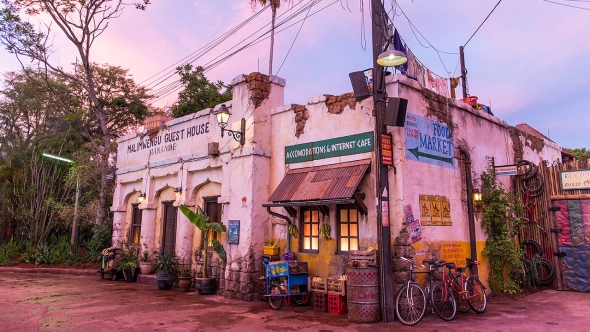
Years before DisneySea would gain international acclaim for it, Animal Kingdom dispatched its visitors into a realm of true exploration and photorealism: lived-in African villages, immense, crumbling Asian temples, a detailed paleontological dig, and vast, endless expanses of wild, investigable pathways, waterfalls, ruins, outposts, trails, and animal experiences on a scale never seen in a theme park before.
So when guests first stepped into Disney’s Animal Kingdom in April 1998, they encountered spectacular lands that felt real, inspired, emotional, and raw… Well… except…
Camp Minnie-Mickey
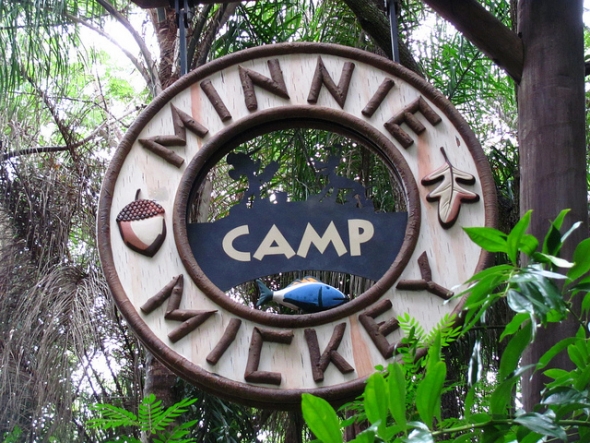
There’s absolutely no question that when Animal Kingdom opened, Camp Minnie-Mickey was an odd man out among the park’s stunning lands. Perhaps it could be excused away as an obligatory Toontown-equivalent; a quaint and charming cartoon oasis in the otherwise grounded park, populated by character meet-and-greet huts, babbling brooks, “summer camp” kiosks, and sweet vignettes of Mickey and friends camping in the otherwise-unchanged Floridian woods.
Even excusing its lack of permanence, the land offered just two attractions – both shows:
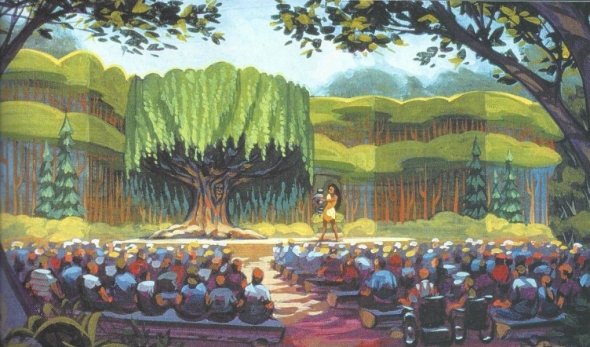
Pocahontas and Her Forest Friends was a zoo-standard animal demonstration show featuring Pocahontas herself introducing the audience to real possums, snakes, raccoons, rats, porcupines, and birds. Though the second show, Festival of the Lion King, would go on to become a cult classic (earning a more permanent and appropriate home in the park’s Africa), it was really just a quick re-purpose of some old parade floats from Disneyland with metal bleachers in a makeshift theater.
In other words, while most of Disney’s Animal Kingdom was built-out, immersive, and alive, Camp Minnie-Mickey felt decidedly more… temporary. That’s because it was never meant to last.
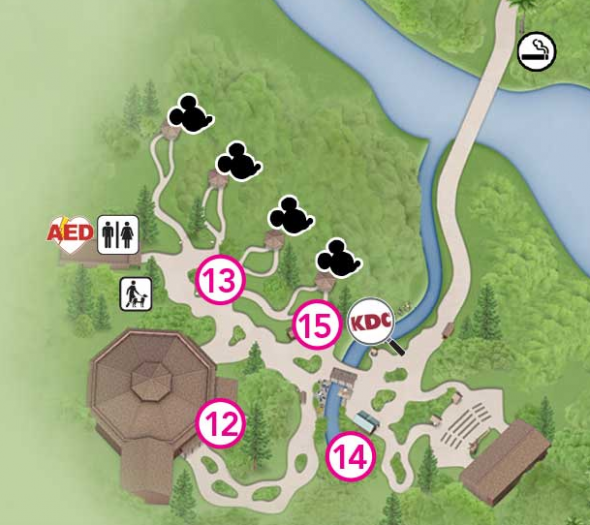
And in fact, it’s what was supposed to fit on that piece of Animal Kingdom’s property that had Disney fans salivating… and that’s the start of the path to Universal’s Lost Continent. Don’t believe it? Read on…


